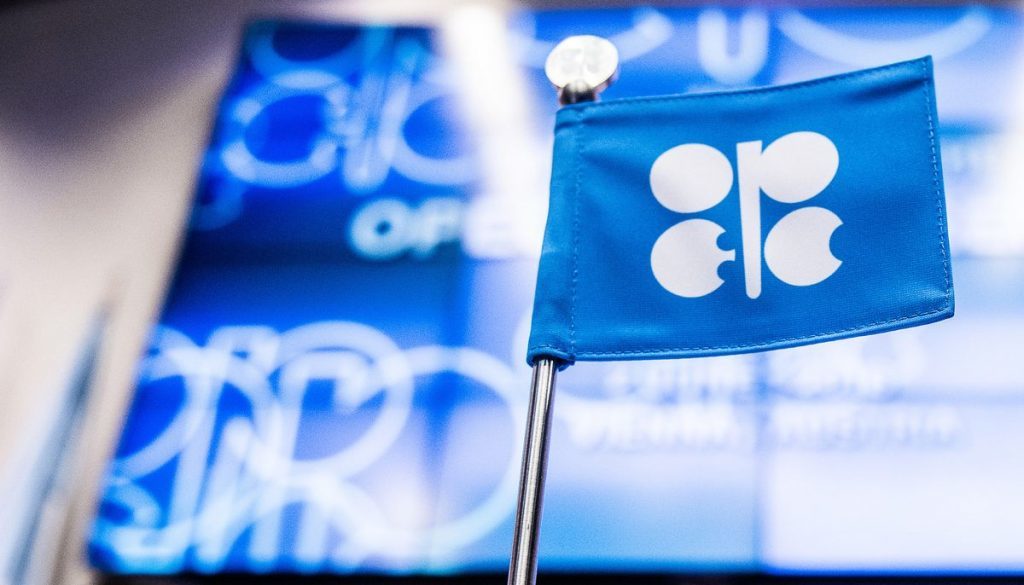
Now is the time to maximize the impact of OPEC’s oil production cuts, yet the market is still waiting for the group’s biggest member to show it’s doing “ whatever it takes” to eliminate the global oversupply.
OPEC’s best chance to make a big dent in the lingering glut in the U.S., and with it reverse oil’s three-year slump, lies in the remaining weeks of peak summertime demand. That’s already become harder because of the resurgence in output from OPEC members exempt from cuts, while there are no signs yet that Saudi Arabia, the group’s de-facto leader, is willing to cut as deeply as it did earlier in the year.
“Saudi Arabia has gone quiet on the solution of ‘whatever it takes’ to force the market into rebalancing,” said Olivier Jakob, managing director at consultants Petromatrix GmbH in Zug, Switzerland.
Echoing a famous pledge by the European Central Bank, Saudi Arabian Energy Minister Khalid al-Falih has repeatedly vowed to do what’s necessary end the oil rout. While the kingdom is still cutting slightly deeper than required — as it has done all year — it increased production in June to the highest level since the accord began, boosted exports by even more, and this week cut prices for Asian buyers.
Given the current state of the oil market, that may not be enough.
Crude sank into bear territory last month amid concerns the cutbacks by OPEC, Russia and other allies are being partially offset by a rebound in U.S. shale production. There’s also the small matter of a vast inventory surplus built up during three years of oversupply. While stockpiles in the industrialized world have fallen, they remained 292 million barrels above the five-year average in April, according to the International Energy Agency.
Step Up!
“For some time we’ve been saying OPEC needs to step up,” said Amrita Sen, chief oil analyst at Energy Aspects Ltd. “Saudi Arabia’s exports were up in June, and this is not what the market wants to see at all. Exports need to come down further.”
Saudi production increased by 90,000 barrels a day to 10.02 million a day in June, according to a Bloomberg survey. It was the biggest increase in almost a year and leaves their output 150,000 barrels a day higher than in January, when the kingdom explicitly cut more than needed as a symbol of commitment to the deal.
While output typically climbs during the summer months as crude is burned to meet surging domestic electricity demand for cooling, the kingdom’s exports jumped even more, by 320,000 barrels a day, according to ship tracking by Bloomberg.
Saudi Arabia reduced prices for most of its crude sales to Asia in August, showing that it doesn’t want to surrender market share in the region despite the commitment to cut output, Sen said.
Keeping Faith
“I do still believe they mean ‘whatever it takes,’ but the market is impatient and wants to see larger stock draws,” said Torbjorn Kjus, chief oil analyst at Oslo-based bank DNB ASA. Saudi exports have been falling and will continue to do so in the third quarter, he said.
Monthly fluctuations in output or exports matter less than overall compliance for the duration of the deal, which remains on track, said Jason Bordoff, director at the Center on Global Energy Policy at Columbia University.
Over the first half of the year, the 11 OPEC members bound by the output curbs were fully compliant with their pledges, the Bloomberg survey showed. However, a big part of that effort was undone by the resurgence of Libya and Nigeria, OPEC members exempt from the cuts that together have added 440,000 barrels a day of production in the last two months.
This problem was becoming apparent when OPEC met in Vienna in May, but the group went no further than agreeing to prolong the existing cutbacks to the end of March.
Little Help
It’s the reluctance of Russia and OPEC-member Iraq to curb their output further that’s probably holding Saudi Arabia back, said Bob McNally, president of consultants the Rapidan Group LLC.
“Their commitment to the letter of the Vienna deal has been exemplary,” said McNally. “A real supply manager would be cutting supply further, but Riyadh understandably refuses to do so without collective contributions.”
Russia would oppose deeper curbs if they were suggested when producers meet in St. Petersburg this month, according to four government officials. Iraq sees no need for steeper reductions for now, Oil Minister Jabbar Al-Luaibi said this week.
By not cutting deeper, Saudi Arabia may be serving its other objectives, particularly as the country grows increasingly wary of giving any more price support to the resurgent U.S. shale-oil industry, said Helima Croft, head of commodity strategy at RBC Capital Markets LLC.
“Was there really a lot of urgency in Riyadh to rescue the price — and investors and U.S. producers — this summer?” said Croft. “I just have the sense that Khalid al-Falih thinks he has done enough and has a different timeline.”
Recommended for you
